When I first started researching my German ancestors, I tried to find cemeteries in Germany to locate my ancestors. I quickly learned that graves are only purchased for about 20-30 years in Germany. So the graves of my ancestors are no longer there. I have not learned where to find the churches or cemeteries records yet.
While visiting Germany with my husband, I wanted to see the four villages my ancestors lived in. We were very limited on time so one afternoon, we did what I call speed villages. We drove from one village to the next, all of them about a half hour apart. I would hop out of the car, find the church, and take pictures around the village. This has been one of my most favorite things I have been able to do.
As we were leaving Ishta, I spotted what looked like an old cemetery. I will admit, I got my hopes up that maybe some of my ancestors were still buried there. It after all was a small village.
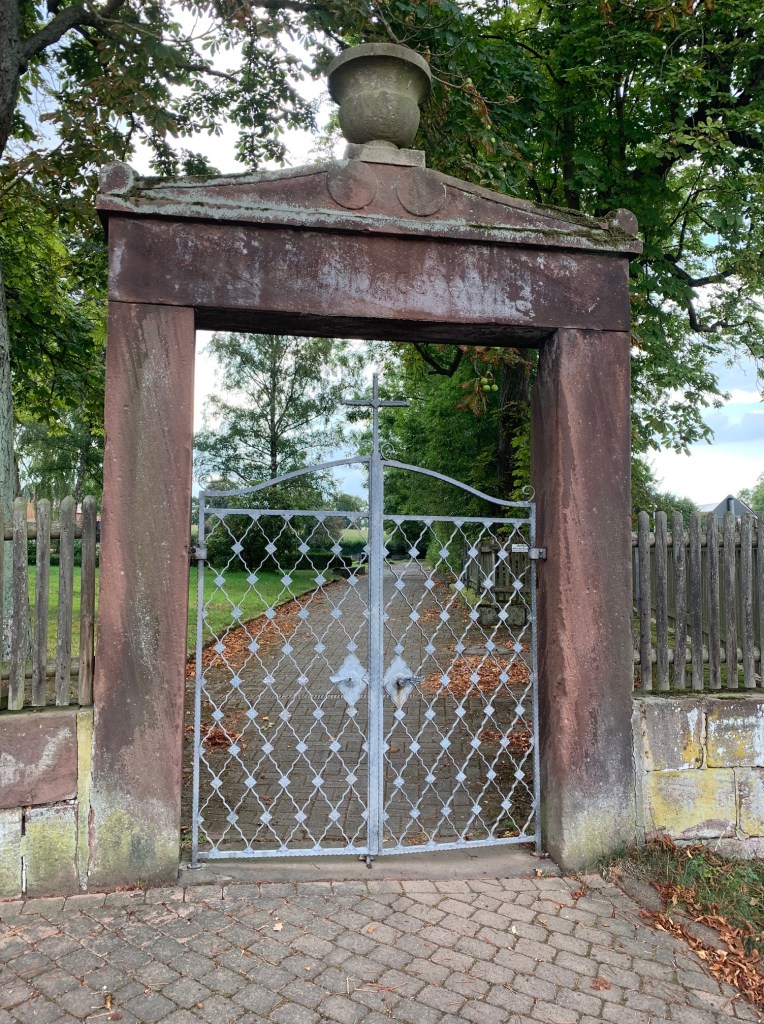
The first thing we saw was a WWI and WWII memorial’s with names engraved of Ishta residents who severed during the two wars.
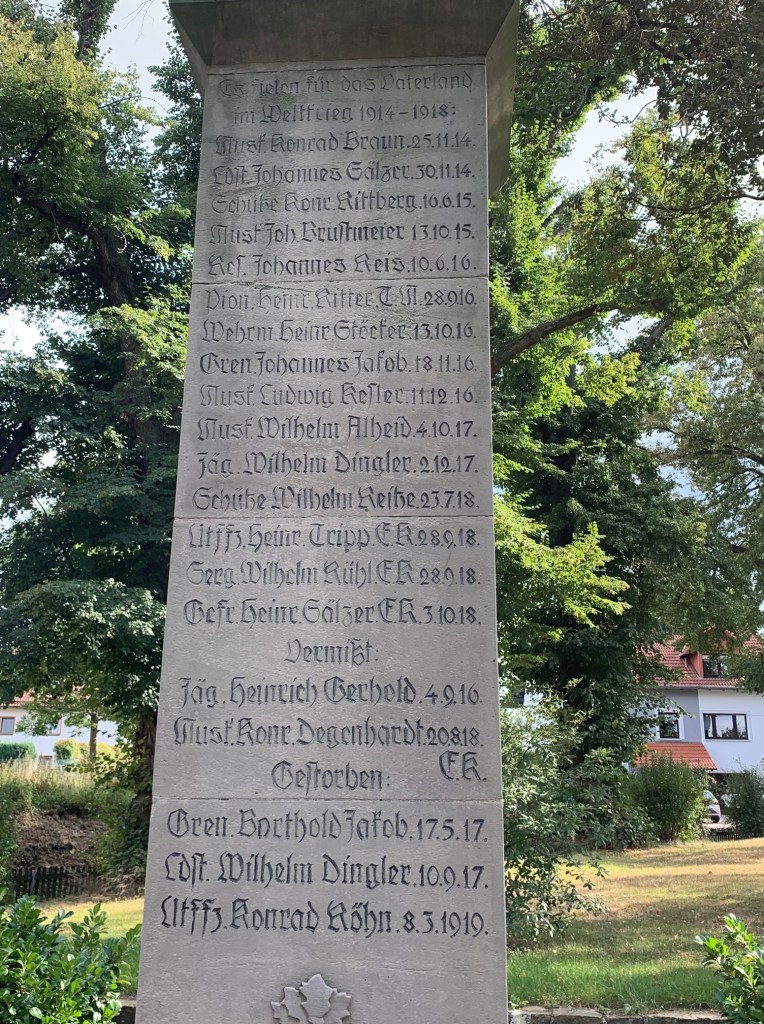

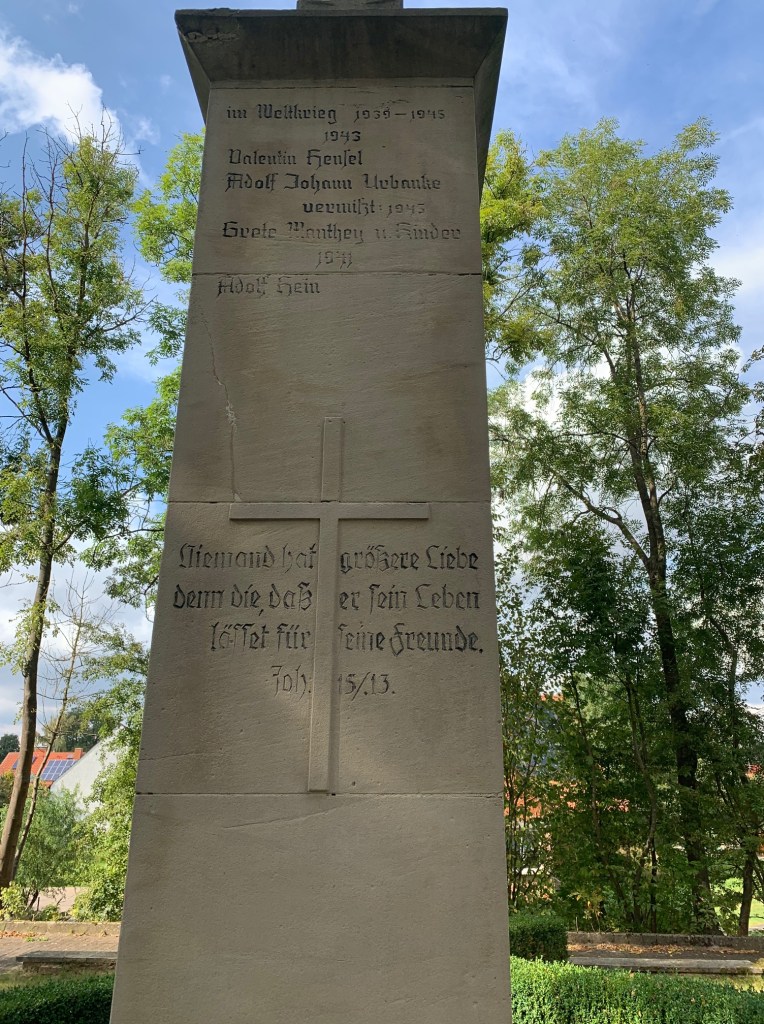
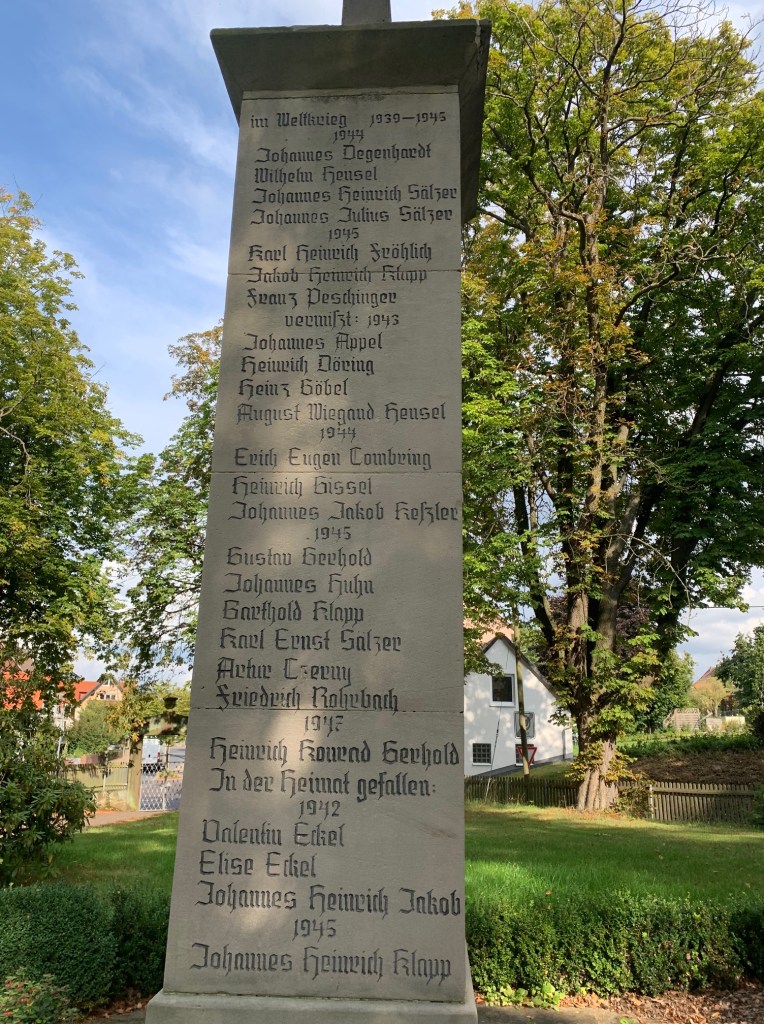
There were three sides of the memorial for WWII and surnames that I have on the memorial are Klapp, Salzer and Jakob. As I said above I have not researched any of these names yet.
I had to walk a ways into the cemetery to get to the headstones. I still had my hopes up that I might be able to find my ancestors in this old German Cemetery. As I got closer I could see that these were all newer headstones. Not a single old headstone. While I was disappointed, I still am glad that I took the time to walk around. I know that my ancestors were buried here. I felt close to them.



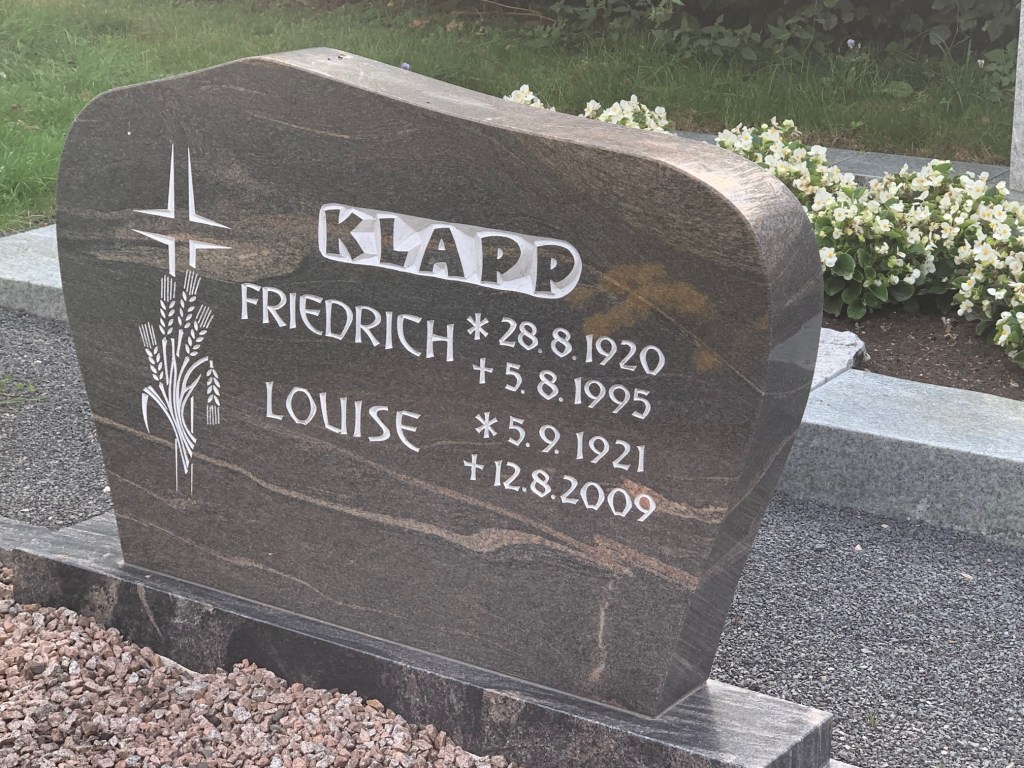
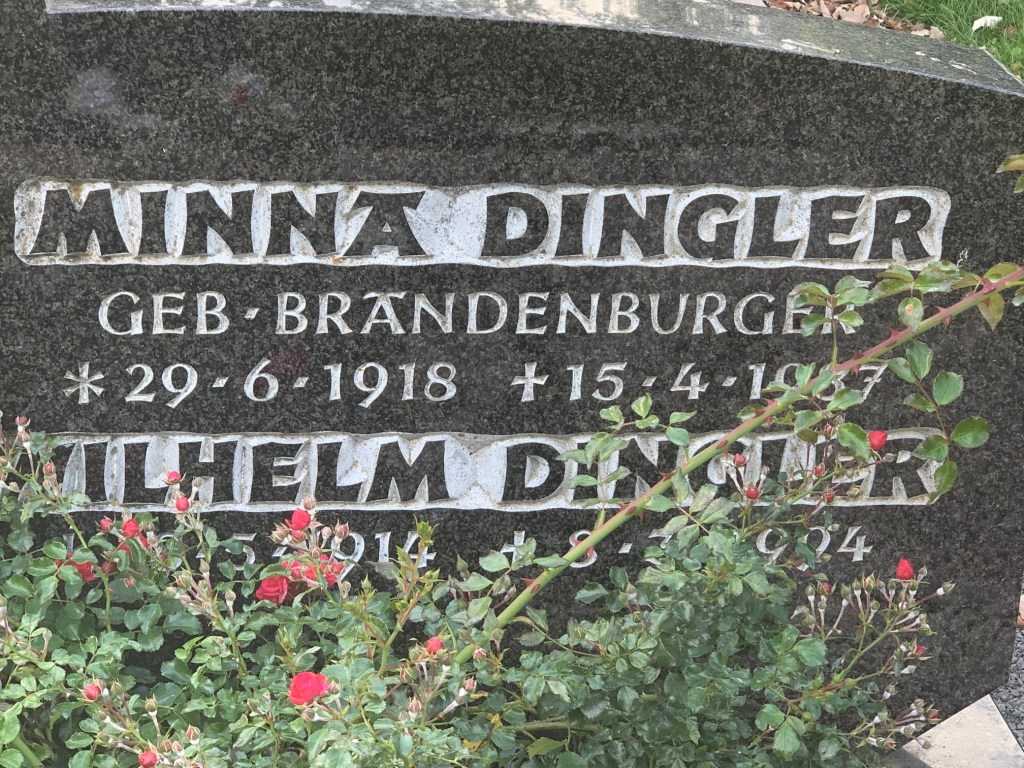
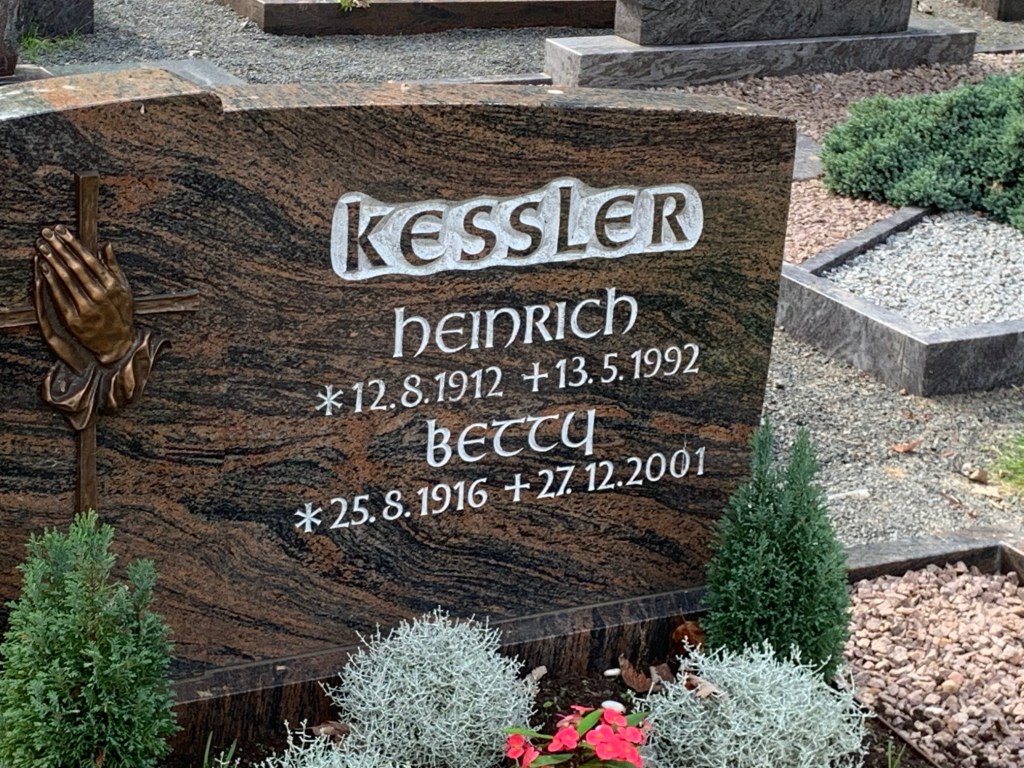
I had to take pictures of any headstone with the same surnames as my ancestors from Istha. One day these headstones will not longer be there. I did do a quick search on some of these names but did not come up with much. Another project for me to work on. Spending time in Germany was a dream come true. Learning more about my German ancestors and spending time where they lived was an amazing experience.

Ok, lets clearify here some things, bear with me this will be a long comment.
In Germany there is the concept of a usage time for a grave site. At the end of the so-called “Ruhezeit” the right of use for a grave also expires. If this cannot or should not be extended, the grave is dissolved.
A grave dissolution means that the resting place is cleared and leveled so that (after the earth has been allowed to rest for some time after levelling to allow it to sink) it can later be reoccupied and become a place of mourning for another family. This does not mean that an exhumation or reburial takes place.
A “Ruhezeit” or “Ruhefrist” is the period during which a grave site may not be disintegrated or otherwise disturbed. Exceptions only apply to subsequent burials in family and partner graves and, under certain conditions, to reburials.
The rest period is prescribed so that the coffin or urn containing the mortal remains can decompose completely in the earth. How long the decomposition process takes depends mainly on the nature of the soil. For this reason, the resting periods in the various cemeteries also differ.
The usual rest period for urn graves is between 10 and 20 years.
Burial graves usually have a rest period between 20 and 30 years.
If the soil is particularly clayey, up to 40 years resting time is required.
While there are copies of some old tombstone inscriptionsavailable (especially for private or church cemeteries and crypts), Parish register burials, funeral sermons, bell tolling accounts, and civil registration death records are easier to find than tombstone inscriptions.
As far as war memorials are concerned, we see the difference between the first and second world wars in the list of war memorials. In the first world war, the rank was also given, in the second only the name.For example, Wilhelm Dingler is indicated that he was a “Jäger”. During the early modern era, the term Jäger was used to describe skirmishers, scouts, sharpshooters and runnes in German and can in its original sense of light infantry usually translated into English as:
“rifleman” (in an infantry role) or “rifles” (in regimental names) and;
“ranger” (especially in North American English).
LikeLike
Frank, Thank you for this. I talked to a cousin many years ago that is German and this is the way he explained it to me.
LikeLike
Hello Frank & Jennifer, the rest periods mentioned in the comments are the ones current times. In the past, it was possible to rent a grave side for much longer. Regular period in the village where I did grow up was up to a 25 years to a maximum of 70 years. This was in early 1980s and was reduced to the current time frames only during the late 1990s. And as was possible to extend rest period in the past if the family did re-rent the grave side at the end of initially bought test period, I did see on cemetry of my village also graves/tombstones for persons who had passed away in second half of 19th century. The grave side of my great grandparents (passed away 1930 and 1941) was cleared/disintegrated only in 1999.
LikeLike